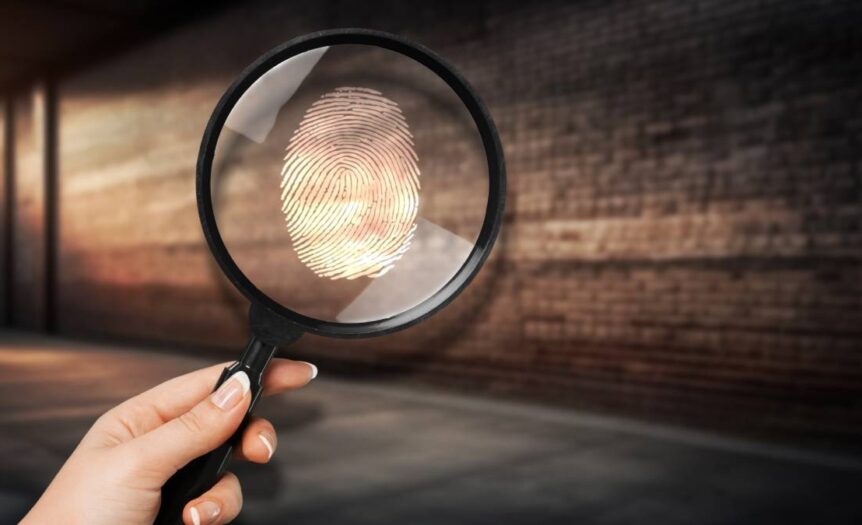Biological evidence plays a crucial role in forensic science and crime scene investigations. It provides critical information that can link suspects to victims or crime scenes, establish timelines, and provide insights into the nature of the crime. Keep reading to learn what qualifies as biological evidence in crime scenes.
Definition and Types of Biological Evidence
Biological evidence encompasses any organic material that comes from a living organism and can be used to support the investigation of a crime. This includes the following:
- Blood
- Saliva
- Hair
- Skin cells
- Other bodily fluids or tissues
Blood and saliva are perhaps the most familiar, often collected from surfaces, objects, or stains left at crime scenes. Hair and skin cells are also common, sometimes recovered from clothing, bedding, or under a victim’s nails. Seminal fluid and vaginal secretions are also common pieces of evidence that can be crucial in sexual assault cases.
Overall, each piece of evidence contains unique genetic markers that can identify an individual—whether victim or perp—with a high degree of certainty.
How Biological Evidence Is Collected
Collecting biological evidence involves meticulous procedures to prevent contamination and preserve the integrity of the sample. First and foremost, crime scene investigators employ protective clothing, gloves, and masks to avoid introducing their own DNA into the scene.
Next, these professionals use tools like cotton swabs, tweezers, and biopsy devices to gather samples. These tools are usually disposable to reduce the risk of contamination. For example, disposable biopsy punches have many applications, and forensics is one for this very reason.
Finally, each piece of evidence is preserved in sterile, clearly marked containers before being sent to a laboratory for analysis.
The Role of DNA Analysis
So what happens once biological evidence leaves the crime scene? DNA analysis is one of the most powerful tools in forensic science, providing definitive answers about what qualifies as biological evidence in crime scenes. Techniques like polymerase chain reaction (PCR) amplify DNA samples, making it possible to analyze even minuscule amounts of biological material. The resulting DNA profiles can match suspects to crime scenes with a high degree of accuracy, often leading to convictions or exonerations.
Did you have any idea about what qualifies as biological evidence in crime scenes? Now that you do, you have a greater appreciation for its collection and analysis and how forensic science can provide invaluable assistance in solving crimes and delivering justice.










 Deering Estate
Deering Estate
 Massage Envy South Miami
Massage Envy South Miami
 Calla Blow Dry
Calla Blow Dry
 My Derma Clinic
My Derma Clinic
 Sushi Maki
Sushi Maki
 Sports Grill
Sports Grill
 The Healthy Kitchen
The Healthy Kitchen
 Golden Rule Seafood
Golden Rule Seafood
 Malanga Cuban Café
Malanga Cuban Café

 Kathleen Ballard
Kathleen Ballard
 Panter, Panter & Sampedro
Panter, Panter & Sampedro
 Vintage Liquors
Vintage Liquors
 The Dog from Ipanema
The Dog from Ipanema
 Rubinstein Family Chiropractic
Rubinstein Family Chiropractic
 Your Pet’s Best
Your Pet’s Best
 Indigo Republic
Indigo Republic




 ATR Luxury Homes
ATR Luxury Homes


 2112 Design Studio
2112 Design Studio
 Hamilton Fox & Company
Hamilton Fox & Company
 Creative Design Services
Creative Design Services
 Best Pest Professionals
Best Pest Professionals
 HD Tree Services
HD Tree Services
 Trinity Air Conditioning Company
Trinity Air Conditioning Company
 Cisca Construction & Development
Cisca Construction & Development
 Mosquito Joe
Mosquito Joe
 Cutler Bay Solar Solutions
Cutler Bay Solar Solutions


 Miami Royal Ballet & Dance
Miami Royal Ballet & Dance
 Christopher Columbus
Christopher Columbus
 Pineview Preschools
Pineview Preschools
 Westminster
Westminster
 Carrollton
Carrollton
 Lil’ Jungle
Lil’ Jungle
 Frost Science Museum
Frost Science Museum
 Palmer Trinity School
Palmer Trinity School
 South Florida Music
South Florida Music
 Pinecrest Orthodontics
Pinecrest Orthodontics
 Dr. Bob Pediatric Dentist
Dr. Bob Pediatric Dentist
 d.pediatrics
d.pediatrics
 South Miami Women’s Health
South Miami Women’s Health

 The Spot Barbershop
The Spot Barbershop
 My Derma Clinic
My Derma Clinic




 Miami Dance Project
Miami Dance Project

 Rubinstein Family Chiropractic
Rubinstein Family Chiropractic
 Indigo Republic
Indigo Republic

 Safes Universe
Safes Universe
 Vintage Liquors
Vintage Liquors
 Evenings Delight
Evenings Delight





 Atchana’s Homegrown Thai
Atchana’s Homegrown Thai
 Baptist Health South Florida
Baptist Health South Florida

 Laser Eye Center of Miami
Laser Eye Center of Miami
 Visiting Angels
Visiting Angels
 OpusCare of South Florida
OpusCare of South Florida

 Your Pet’s Best
Your Pet’s Best





 HD Tree Services
HD Tree Services
 Hamilton Fox & Company
Hamilton Fox & Company


 Creative Design Services
Creative Design Services